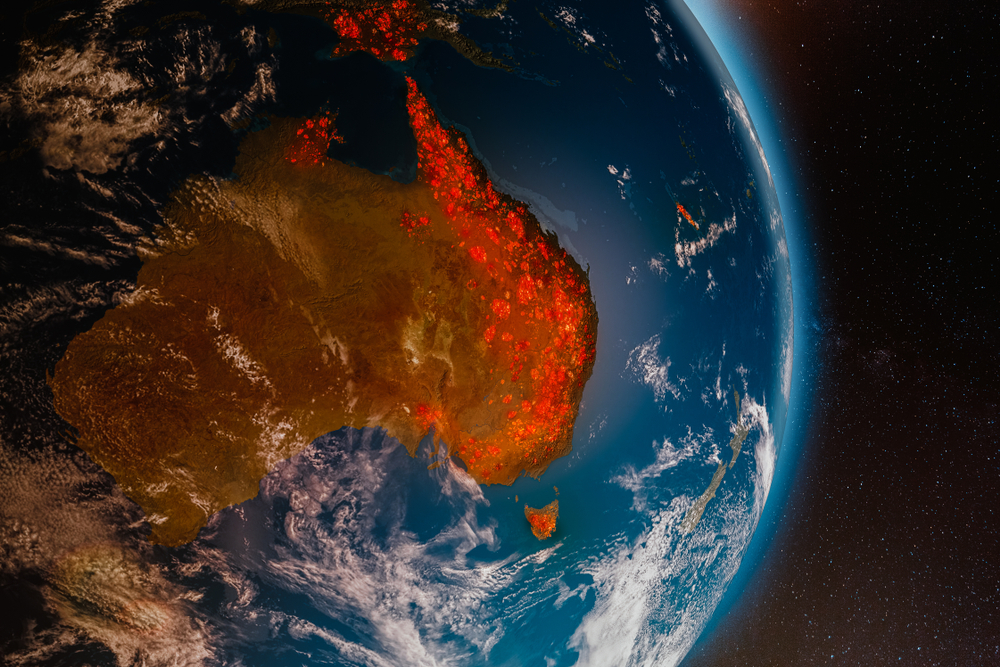In recent months, the world has seen one of the most dramatic and tragic examples of how global climate change will bring disaster: the Australian wildfires. Beginning with a series of brushfires in June 2019, these fires are ongoing and still raging as of the beginning of this year. Support has poured in from around the globe, but firefighters continue to struggle to get them under control.
Australia is burning, and no one knows when it will be extinguished. These fires are also causing incredible damage to the ecology and biodiversity of the Australian continent. Simply put, Australia’s ecosystem will never be the same.
Five ways The Wildfires Are Permanently Changing Australia’s Landscape
The sheer extent of the damage
While history has shown that life can return post-disasters (ie, volcanic eruptions), the devastation facing Australia is something that will not be revived in our lifetime, or possibly our children’s lifetimes. Based on current reports and estimates, the fires have already scoured more than 72,000 square miles of land. By comparison, that is roughly the size of Washington State, or Ireland. Nearly 6,000 buildings have been destroyed, and at least 34 human lives have been lost. The toll on animal life, however, has been far worse.
Over one billion animals killed
The loss of life and damage to Australia’s wildlife should not be underestimated. We’ve all seen the heartbreaking rescues of koala and kangaroos in distress, but there’s much more at stake. It is believed that at least a billion animals have perished as a result of the fires. This number however, is devoid of insects and other smaller or microscopic creatures that impact the life-cycle in Australia. In addition to those killed, the harm done to the surviving species will undoubtedly shorten lifespans and/or inhibit breeding.
Many species may be driven to extinction
Over one hundred separate plant and animal species which are currently considered threatened are at the center of the wildfires. Of these, 50 species are contained within the territory which saw 80% or more of its land wiped out by the fire. It is almost inevitable that this fire will push at least some of those species into extinction, although we won’t know the full extent of the damage until the fires are contained. This is an almost unthinkable blow to biodiversity in Australia, likely to be one of the most extreme single extinction events in human history.
Aquatic animals are at risk as well
The landlocked aren’t the only ones at risk. Huge quantities of ash are pouring into the rivers, streams, and lakes in Australia – and flowing into the ocean as well. While the focus has been on land and the damage here has not yet been evaluated, the signs of distress are already beginning in water-borne life. Debris on beaches are disrupting the tides, and causing harm to many forms of tidal and seaside beings. When the fires are contained, it will be necessary to assess the damage to Australia’s water systems, and the cleanup and restoration efforts will be challenging, if not impossible, to achieve to a full extent.
Increasing global warming
Carbon buildup in the atmosphere is one of the main causes of global climate change, and currently, the fires are releasing unimaginable amounts of carbon directly into the atmosphere. Hundreds of millions of tons of carbon dioxide, at a minimum, is being thrust into the environment – only worsening and expediting an already dire situation. In other words, catastrophic brush fires caused in part by global warming are now directly contributing to global warming, and could, therefore, incite more brush fires. We could be at the start of a much more destructive cycle.
While the world waits for the current fires to be extinguished, it’s unimaginable to think what scientists and ecologists will uncover, and what’s waiting in ashes of the remains. Moving forward, the survival of plant and animal species will be tested from the challenges of breeding and nesting, to the starvation and decimation habitats.
As more people recognize the impact climate change has on the delicate balance of eco-systems throughout the world, it’s important that we teach generations to come about conservation and the preservation of nature and wildlife. At Nature Watch, it is our hope that the education of our youth can curtail the impact of climate change through appreciation, experimentation, and greater protection of planet Earth.

